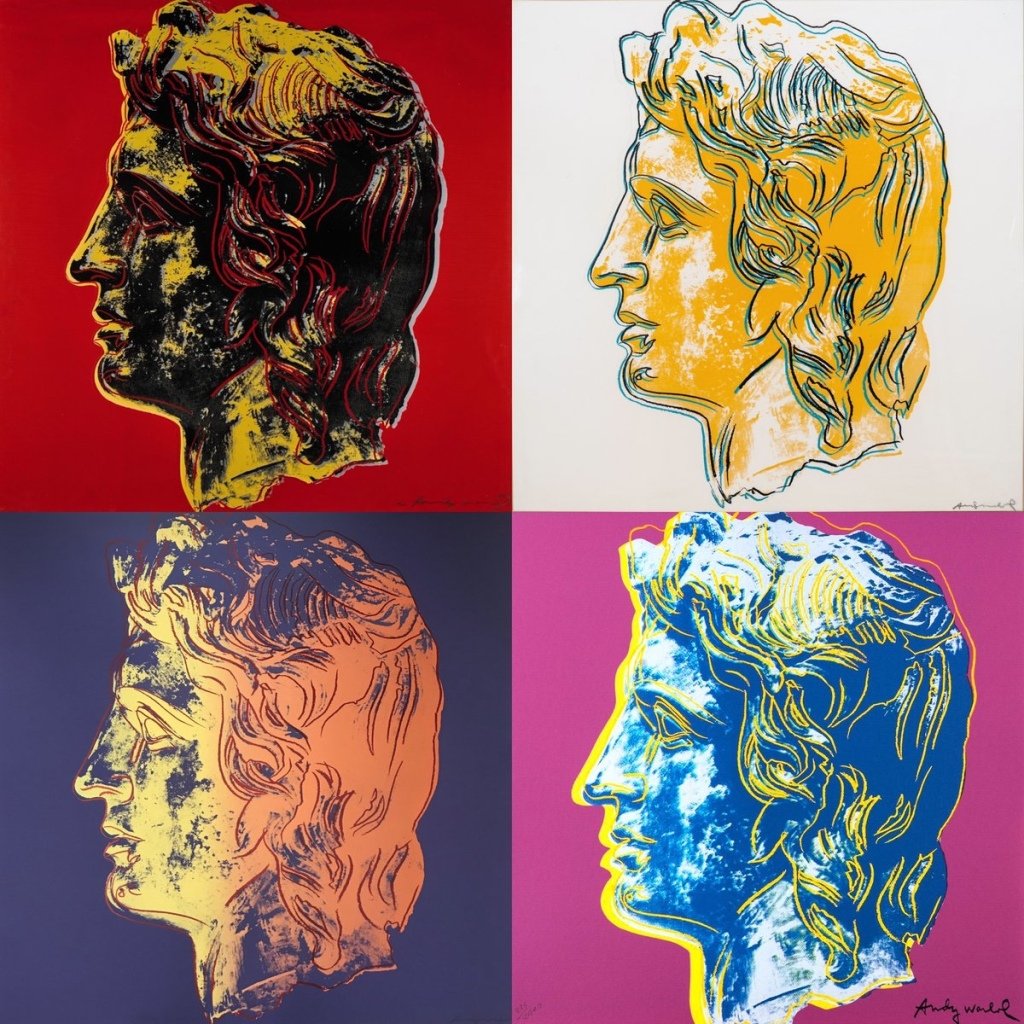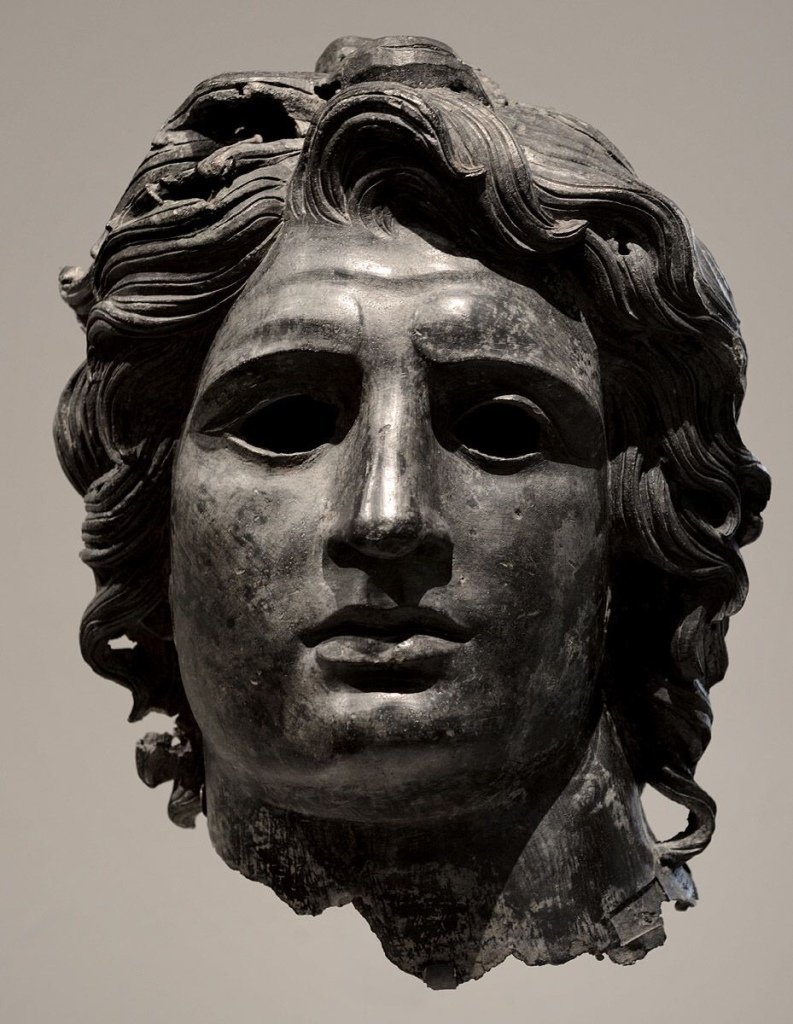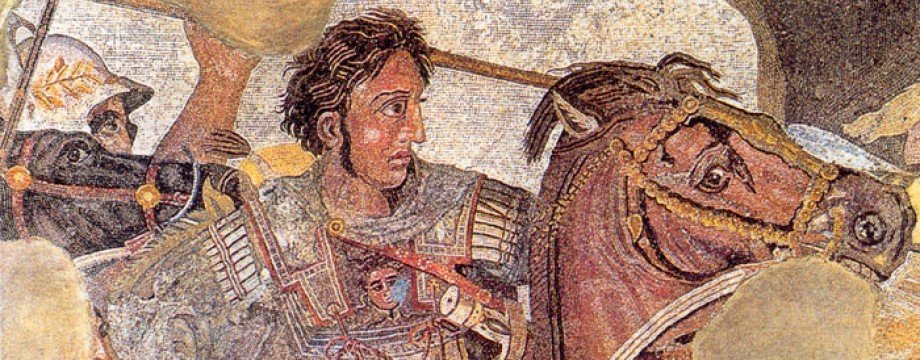When I pressed publish for yesterday’s post, the option to add tags appeared. Let’s see if it works today.
A few weeks ago, I came across this image of Alexander by Andy Warhol. Although I am not a big fan of modern art, this one touches me.

I like that Warhol has taken an old image of Alexander: …

… and done something new with it while at the same time keeping the original image at the heart of his work.
If I may go into lit. crit mode, Warhol’s print seems to me to be the art equivalent of a film that remains true to the spirit of the book it is adapting rather than one that simply uses elements of the book to create what is essentially a new work. I dislike it when the latter happens as it is disrespectful to the book and author. Filmmakers who are tempted to go down this path should just create their own story rather than misuse another.
With that in mind, we might ask what does the original bust tell us and how does Warhol’s print stay true to it?
The original bust presents the iconic image of Alexander: his leonine hair, gentle faraway gaze, and slightly parted lips. Strength, dreaminess and motion - key elements of his character - are all present here.
In like fashion, Warhol draws out elements of Alexander’s character through his use of colour.
For example, the red background in the top left image puts us in mind of blood, war, and danger — key elements of Alexander’s life. The darkness of Alexander’s bust hints at the more savage elements of his character.
The white background of the top right image suggests purity, the purity of his relations with women, his generosity to friends, and the respect he gave those of his enemies who fought nobly. The yellowness of his hair and head also puts me in mind of the Argeads’ connection to Herakles.
The blue background of the bottom left image gives it a certain mysterious air. Alexander is a mysterious person to us. The Alexander we ‘know’ is the Alexander of the Romans and his soldiers (even if they are as high ranking as, say, Ptolemy). He is not the Alexander who lived. At least, not completely.
The purple-pink background of the bottom right image suggests royalty, and maybe even Alexander’s priestly role (I’m speaking here as a Catholic where purple is a marker of ecclesial rank).
Those are some of my thoughts. Do let me know yours. There is just one thing left now, and that’s to say if you would like to know more about Warhol’s Alexander, visit the my art broker website. It’s a fascinating article. Right, let’s hit publish and see if I can tag the post.

I like it, but do we really know what Alexander looked like?
LikeLike